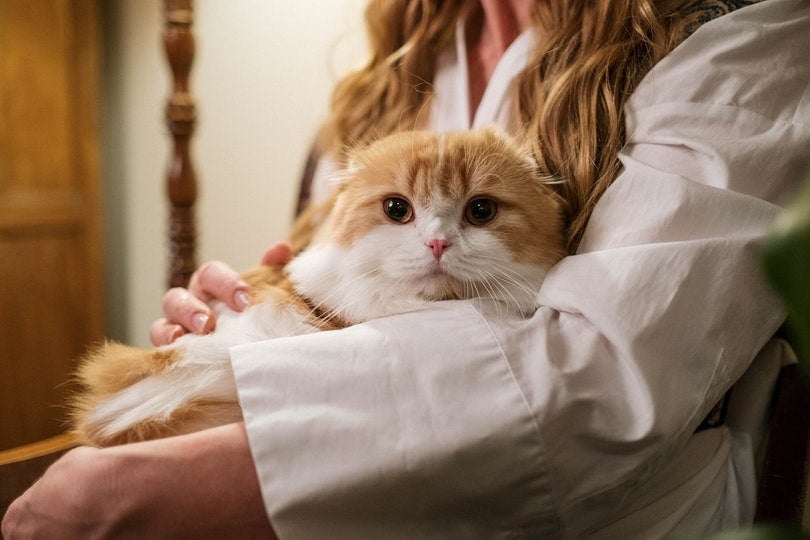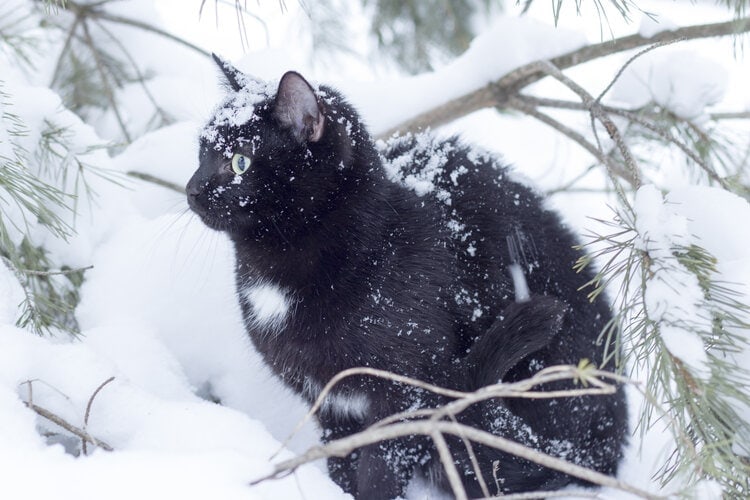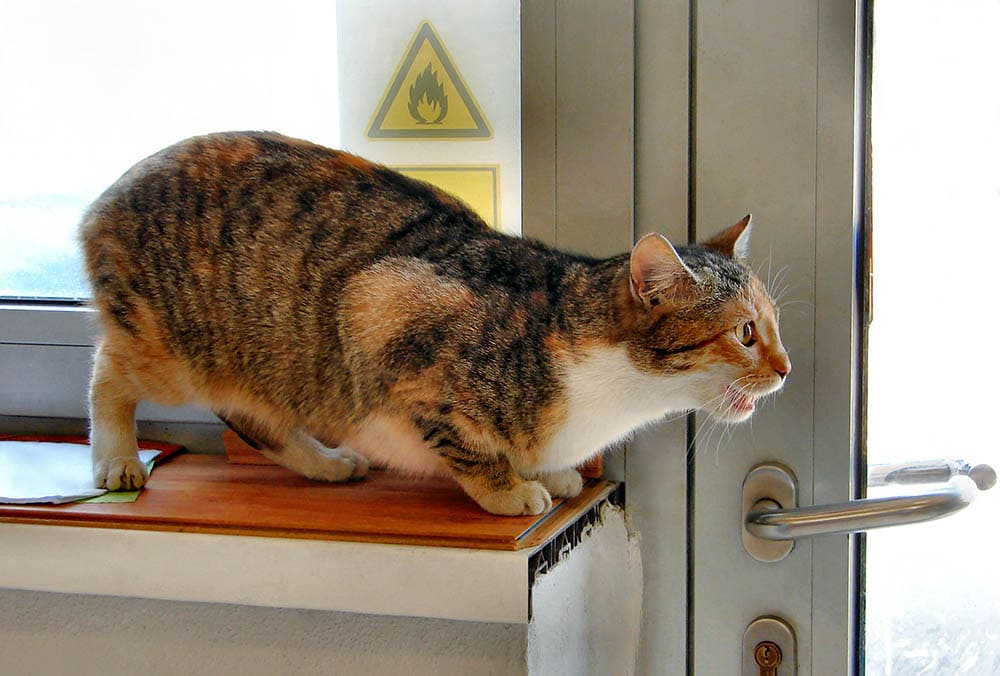Kinkalow Cat Breed Info: Pictures, Temperament & Traits

Updated on
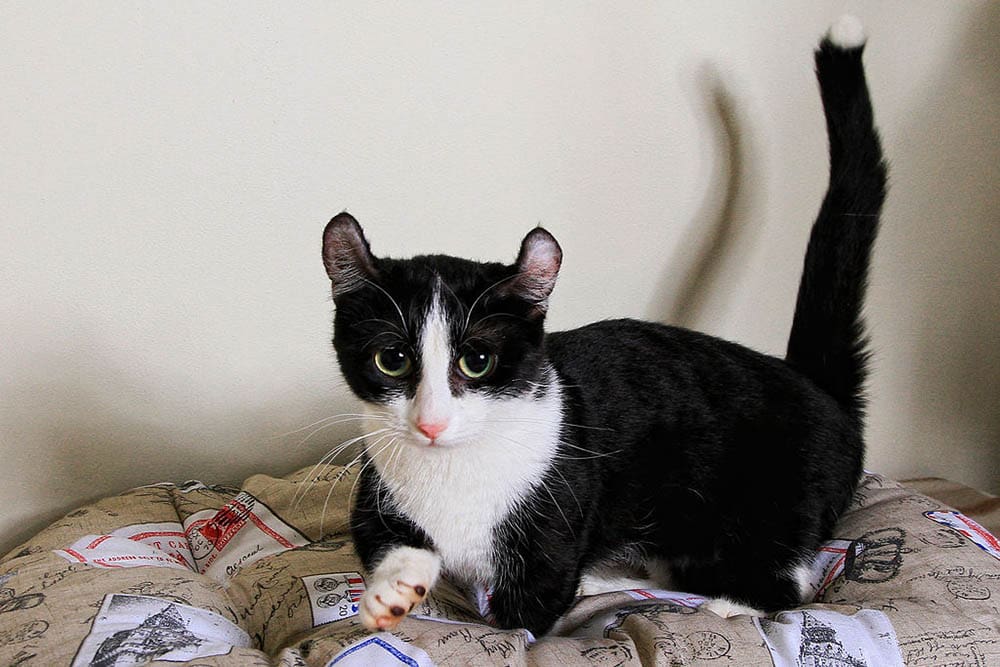
| Height: | 6–8 inches |
| Weight: | 3–7 pounds |
| Lifespan: | 12–15 years |
| Colors: | Cream, white, black, gray, calico, orange, tortoiseshell |
| Suitable for: | Multi-pet households, families with kids |
| Temperament: | Sociable, affectionate, friendly, playful, adventurous |
Don’t let their small size fool you, though—Kinkalows have huge personalities. They are social butterflies who love to play and be around their people. They’re also quite brave. Kinkalows are known for their adventurous streaks. Don’t be surprised if your Kinkalow takes a flying leap off the furniture or tries to catch a bird through the window.
The only downside of falling in love with a Kinkalow is how rare they are. Because they are a relatively new breed, there just aren’t many of them around. But just in case you get lucky enough to welcome one home, keep reading for a closer look at these special kitties.
Kinkalow Kittens
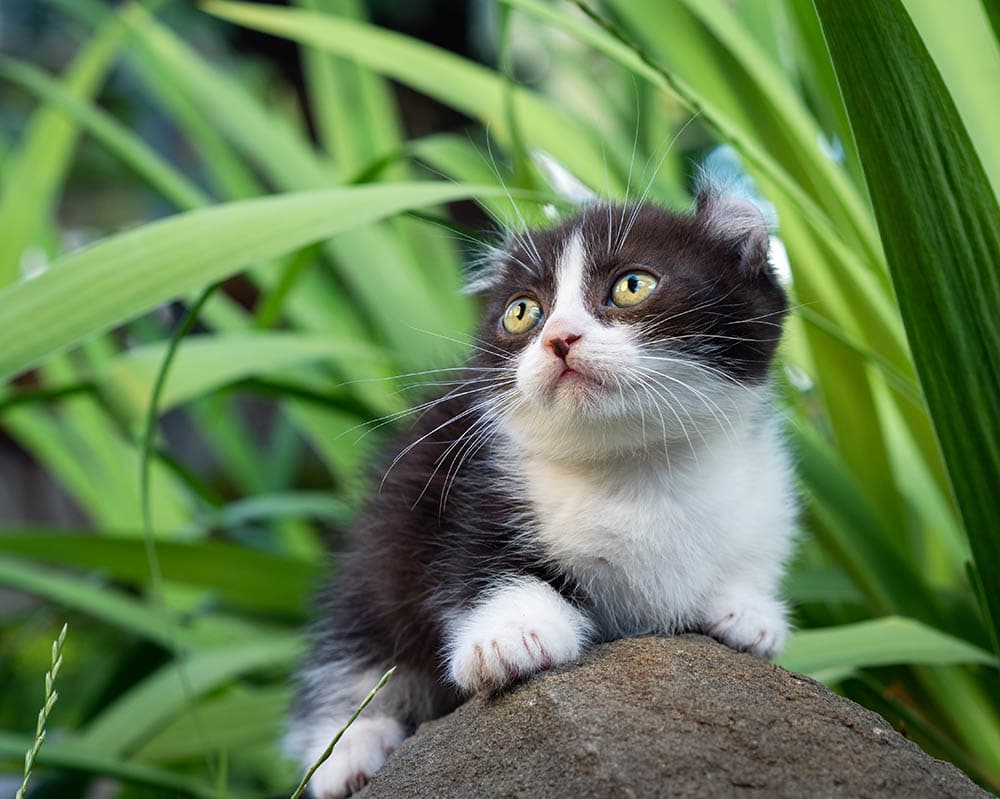
These cats demand such a high price tag for several reasons. For one, while the Kinkalow cat breed is not technically new, the breed still falls under the experimental category, so there are not a lot of Kinkalow breeders yet.
If you do manage to find one, expect a long waiting list, intensive background checks, and a contract full of requirements. In other words, be prepared to jump through some hoops. But in the end, it will all be worth it when you get to bring that fluffy munchkin home.

Temperament & Intelligence of the Kinkalow Cat Breed
Everything that makes cats so awesome—their independence, playfulness, mischievousness, and intelligence—is amplified in the Kinkalow breed.
They love attention and will do the silliest things to get it. You’re reading a book? They’ll try to sit on top of it. You’re trying to take a nap? Get ready to become a trampoline. But their antics are just so darn cute that it’s hard to stay mad at them for long.
Kinkalows are also extremely smart. In fact, because they’re both social and intelligent, they’re very receptive to training. Try teaching your Kinkalow to walk on a leash, fetch, or perform simple tricks. You may be surprised at how quickly they catch on.
While they love company, Kinkalows won’t be glued to your hip. They’re independent and enjoy their alone time, making them a terrific match for busy families or those who work long hours.
Finally, this may be hard to believe, but Kinkalows are actually terrific hunters. They have a high prey drive and love to stalk and chase anything that moves, including their own tails! Make sure to channel that energy by providing your Kinkalow with plenty of toys and puzzles to keep them busy.
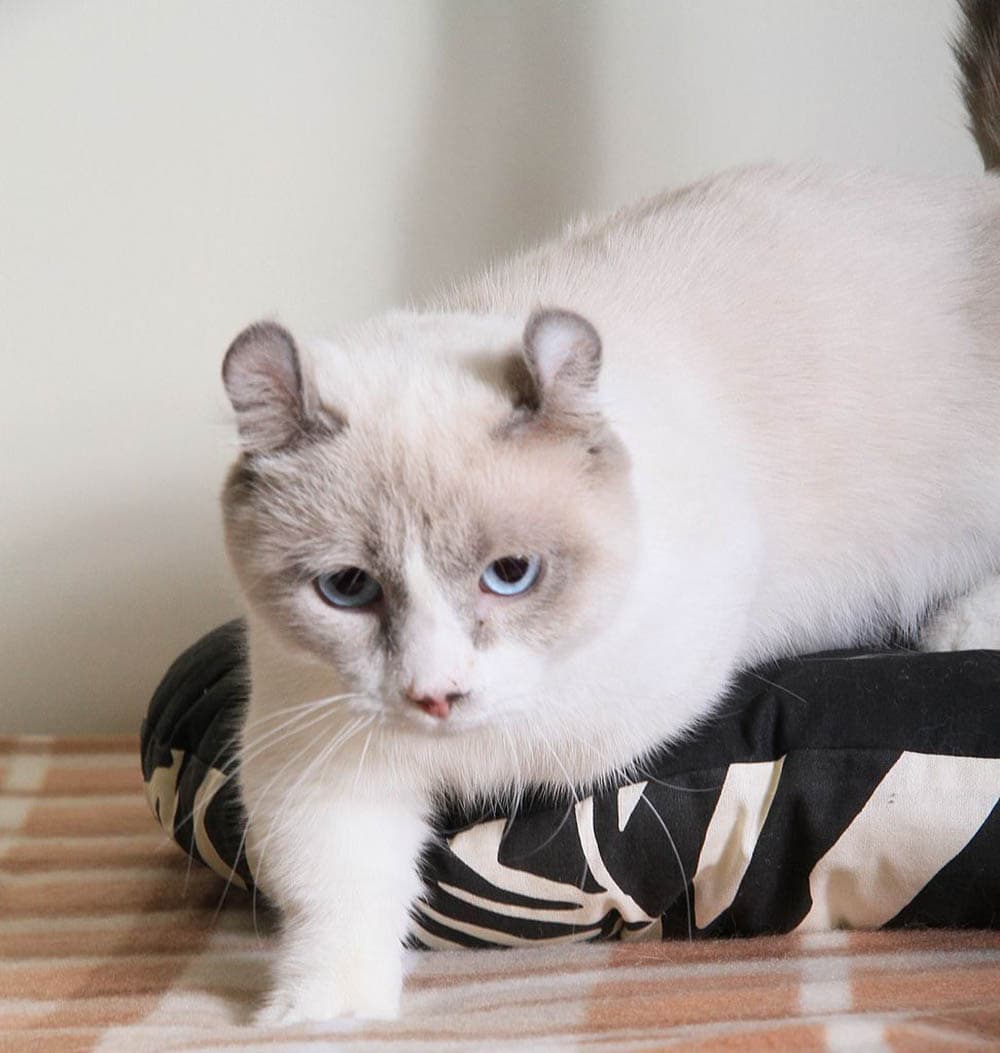
Are These Cats Good for Families? 👪
Thanks to their friendly and laid-back disposition, Kinkalow cats get along swimmingly with just about everyone—kids included. Kinkalows are patient, tolerant, and have an endless supply of love and cuddles to give. However, be sure to teach your little ones how to properly handle and play with cats, as even the gentlest feline can have a bad day.
Does This Breed Get Along With Other Pets?
As long as they’re introduced and socialized properly, Kinkalow cats can get along with just about any animal, including dogs and other cats. They see everyone as a potential playmate.
It’s a good idea to have at least one other pet in the home to keep your Kinkalow company while you’re away. They can help each other burn off some energy and keep each other entertained. As we mentioned earlier, however, Kinkalows have a high prey drive, so you may want to keep them away from small animals such as rodents, birds, and reptiles.
Things to Know When Owning a Kinkalow
Food & Diet Requirements 🐡
Kinkalow cats don’t have special dietary requirements and can eat the same food as any other domestic cat. Due to their short legs, never allow your Kinkalow to get overweight. Obesity can put undue strain on the spine, legs, and organs and shorten their lifespan. As always, consult with your veterinarian to determine the best diet and nutrition plan for your cat.
Exercise 🐈
You don’t need to convince a Kinkalow to get up and move—they have plenty of energy all on their own.
This breed loves to play, so make sure you have plenty of toys on hand to keep them occupied. A cat tree or climbing tower is also a great way to provide your Kinkalow with some vertical space to explore.
Treat puzzle toys are a great way to give your Kinkalow a mental workout and help them burn off some energy. Remember that these kitties are smart, so make sure the toys are challenging enough to keep them engaged.
Finally, don’t forget to provide your Kinkalow with plenty of opportunities to run and stalk. A laser pointer is always a hit, or you can try offering them a feather on a string to chase. Just be sure not to leave them unsupervised with any toys that could be swallowed or cause injury.
Training 🧶
These brainiacs are some of the smartest cats around, so consider short training sessions for your daily bonding routine.
Your Kinkalow will love tricks where they can show off their sporty shelves. Try teaching them to fetch and treat them with their favorite snack when they bring it back to you. You can also stack objects and challenge your kitty to jump over them or walk along a narrow surface.
Only use positive reinforcement during training, such as treats, praise, and petting. Never use punishment or violence, as it will only scare or hurt your cat. Kinkalows are quite sensitive and will quickly lose trust in you if they feel threatened.
Grooming ✂️
Kinkalows can have either short or long hair. The hair length will determine the frequency of grooming needed to keep your cat’s coat in good shape.
That said, you should still brush your Kinkalow regularly to remove any dead hair, distribute their fur’s natural oils, and reduce shedding around the house. Your Kinkalow is also going to love the spa treatment.
Like most cats, Kinkalows are prone to dental problems, so stay on top of their oral health. Give them hard dental treats to help remove tartar build-up, and schedule regular teeth cleanings with your veterinarian.
Health and Conditions 🏥
Kinkalow cats are generally healthy cats, but they can still inherit health issues from their American Curl and Munchkin parents. Their unique body structure can also cause some health problems, such as joint issues.
Additionally, their short legs can make them more susceptible to injury. Be careful when handling your Kinkalow, and never let them jump from extremely high places.
General cat care like keeping their vaccinations up to date, feeding them a healthy diet, and taking them for regular check-ups will go a long way in keeping your Kinkalow safe and healthy.
- Ear infections
- Weight gain
- Spinal problems
- Hip dysplasia
- Joint disease
Male vs Female
There isn’t much difference between male and female Kinkalows, but males tend to be slightly larger than females. Both typically reach maturity at 6 months, during which time you get them spayed or neutered.
As far as personality goes, most Kinkalows share the same active and playful temperament, so enjoy discovering your cat’s unique quirks.
3 Little-Known Facts About the Kinkalow Cat
1. Kinkalow cats often have folded ears.
The Kinkalow cat breed is the result of crossing the Munchkin cat with the American Curl. One of the most notable physical traits that they inherit from the American Curl is their curled ears. In fact, many Kinkalows have ears that are so tightly curled that they appear to be folded over.
2. Most Kinkalow cats are pseudo-dwarfs.
From their Munchkin lineage, Kinkalows inherit a condition similar to dwarfism called pseudoachondroplasia. This means that Kinkalows are short in stature and have shortened, stubby legs like dwarfs. However, instead of a bigger head, they have a normally proportioned head. Many Kinkalows stay small their entire lives and never grow to be more than 8 inches tall.
3. The Kinkalow cat breed is considered exotic.
The International Cat Association still places the Kinkalow cat breed under experimental breed status. They’re also considered rare and exotic. So, as a Kinkalow cat owner, you’re in for a bit of an adventure. Be prepared to be the talk of the town when you take your exotic feline friend out in public.
Final Thoughts
If your stars align and you find yourself the proud owner of a rare Kinkalow cat, get ready for one of the happiest and most rewarding pet experiences of your life.
These smart, beautiful, and loving felines make amazing companions and will brighten up any home with their energy and silly antics. Just be prepared to give them plenty of toys, playtime, and love—you’ll find it impossible to resist them anyway!
Featured Image Credit: Tinkerbella (Image Credit: Kirimiti, Wikimedia Commons CC SA 3.0 Unported)



